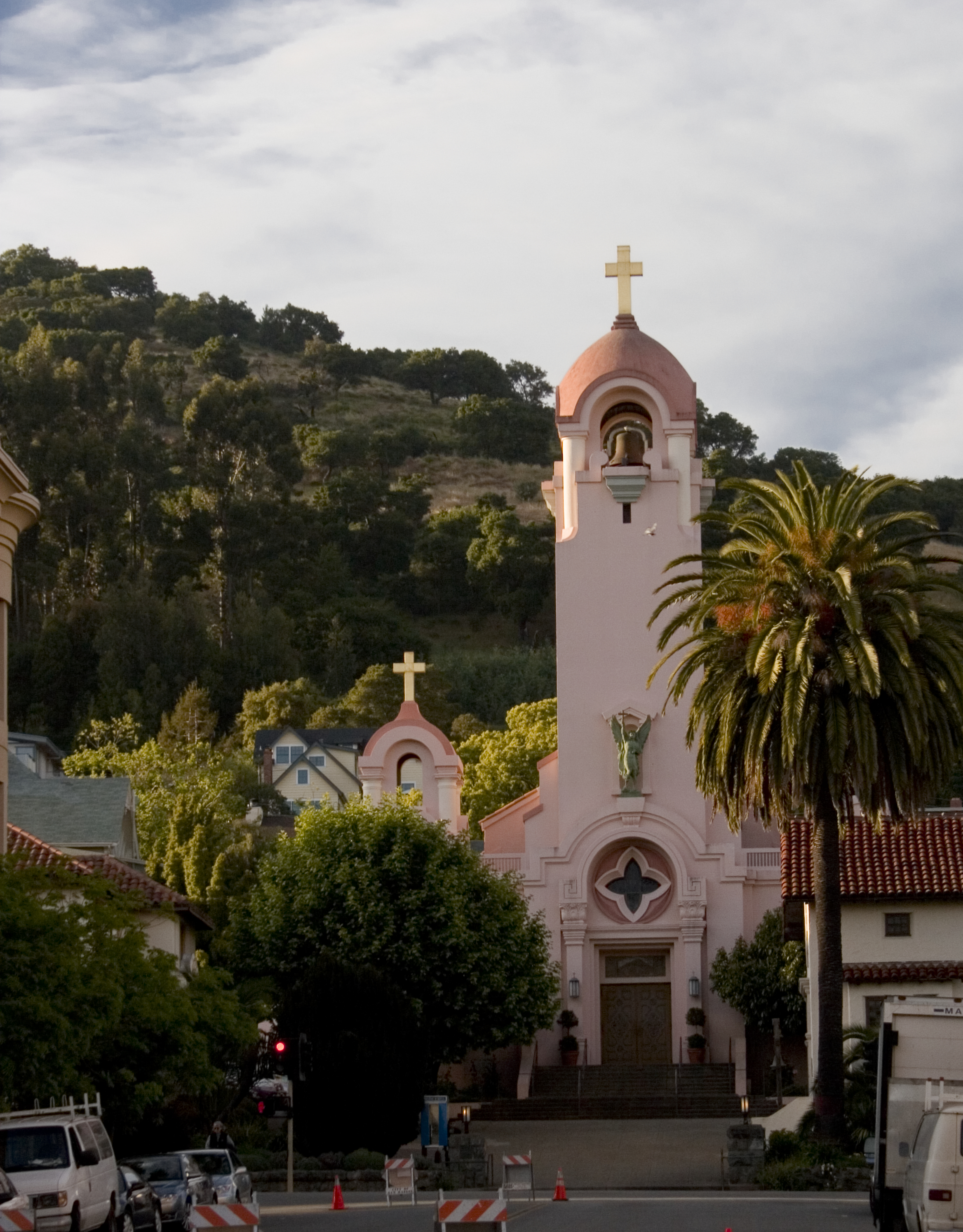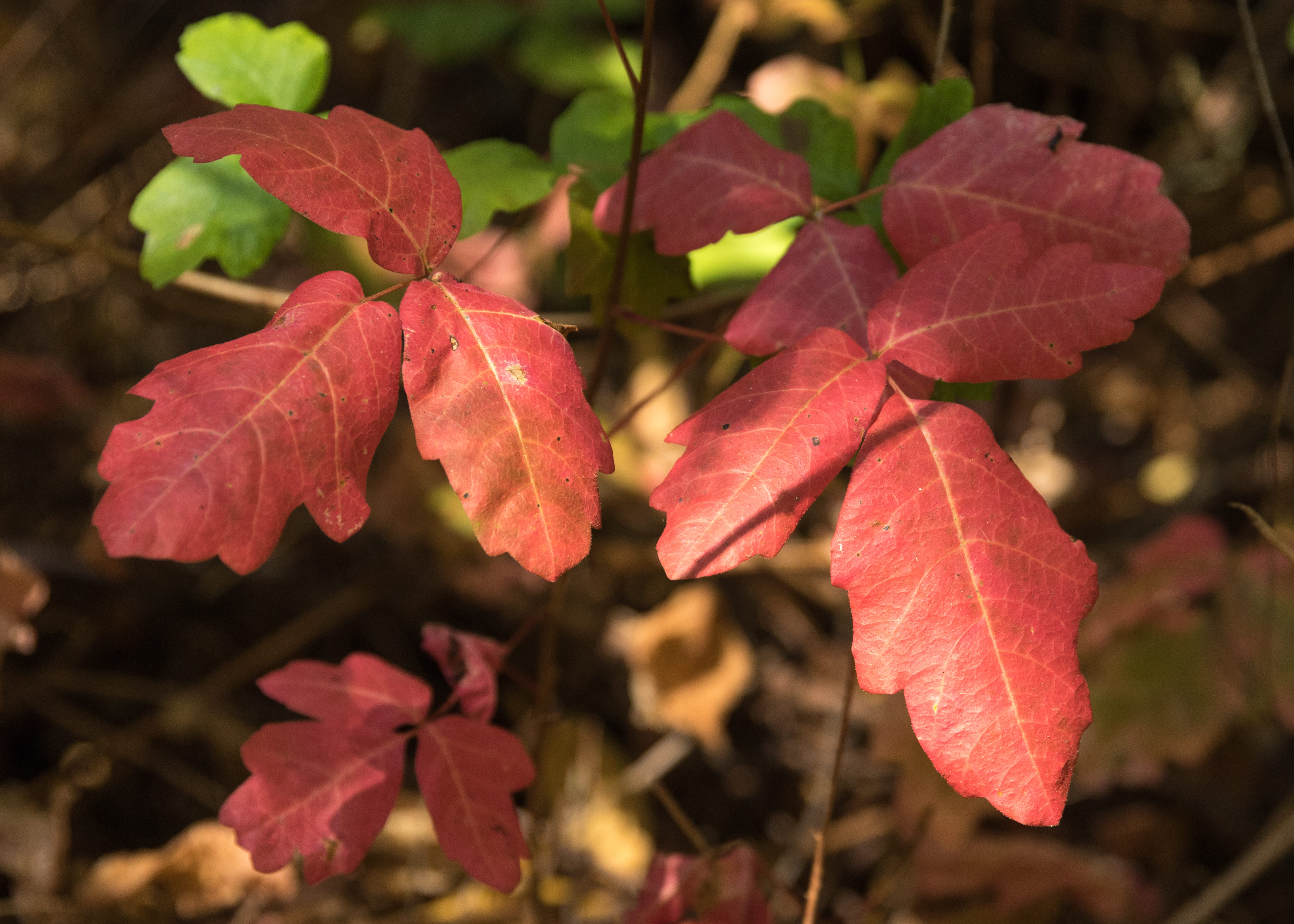|
Pelican Lake (Marin County, California)
Pelican Lake is a small lake in the southern portion of the Point Reyes National Seashore, northwest of Bolinas. The lake sits at an elevation of and has an outflow via the short Pelican Lake Creek southwest through a notch in the coastal cliffs onto Double Point's Bolsa Beach. Pelican Lake is one of the five Coast Trail Lakes, along with Bass Lake, Crystal Lake, Ocean Lake and Wildcat Lake. Alamere Falls is about to the northwest. Geology As with the other nearby lakes in the southeast portion of the Point Reyes peninsula, Pelican Lake occupies a natural synclinal depression formed behind blocks of rock displaced by landslides within the past 10,000 years. The depressions forming Crystal, Pelican and Bass lakes appear to have been caused by the Double Point Slide, which covers an area of about . The rocks involved in the landslide are shale, chert and sandstone, some similar to Miocene rocks of the Monterey Formation and others to Pliocene rocks from the Central Coast Range ... [...More Info...] [...Related Items...] OR: [Wikipedia] [Google] [Baidu] |
Marin County, California
Marin County is a County (United States), county located in the northwestern part of the San Francisco Bay Area of the U.S. state of California. As of the 2020 United States Census, 2020 census, the population was 262,231. Its county seat and largest city is San Rafael, California, San Rafael. Marin County is across the Golden Gate Bridge from San Francisco, and is included in the San Francisco–Oakland–Berkeley, CA Metropolitan Statistical Area. Marin County's natural sites include the Muir Woods Sequoia sempervirens, redwood forest, the Marin Headlands, Stinson Beach, CA, Stinson Beach, the Point Reyes National Seashore, and Mount Tamalpais. As of 2019, Marin County had the sixth highest income per capita of all U.S. counties, at $141,735. The county is governed by the Marin County Board of Supervisors. The Marin County Civic Center was designed by Frank Lloyd Wright and draws thousands of visitors a year to guided tours of its arch and Atrium (architecture), atrium desig ... [...More Info...] [...Related Items...] OR: [Wikipedia] [Google] [Baidu] |
Pliocene
The Pliocene ( ; also Pleiocene) is the epoch in the geologic time scale that extends from 5.333 million to 2.58See the 2014 version of the ICS geologic time scale million years ago. It is the second and most recent epoch of the Neogene Period in the . The Pliocene follows the Epoch and is followed by the Epoch. Prior to the 2009 ... [...More Info...] [...Related Items...] OR: [Wikipedia] [Google] [Baidu] |
Lupinus Arboreus
''Lupinus arboreus'', the yellow bush lupine (US) or tree lupin (UK), is a species of flowering plant in the legume family Fabaceae. Description ''Lupinus arboreus'' is an evergreen shrub growing to tall (hence the alternative common name, tree lupine) in sheltered situations, but more typically tall. It is capable of tolerating temperatures down to −12 °C and living for up to seven years. It has green to gray-green palmate leaves, with 5–12 leaflets per leaf. The leaflets are long, often sparsely covered with fine silky hairs. In spring it bears many racemes, long, of fragrant, soft yellow, pea-like flowers. Both yellow and lilac to purple flowering forms are known. However, the yellow form is more common, except in the north of the species' range. Distribution The shrub is indigenous to California, US, where it is widely distributed among coastal sage scrub and sand dunes. Because it has been widely introduced in the state, there is some uncertainty about its ... [...More Info...] [...Related Items...] OR: [Wikipedia] [Google] [Baidu] |
Frangula Californica
''Frangula californica'' (previously classified as ''Rhamnus californica'') is a species of flowering plant in the buckthorn family native to western North America. It produces edible fruits and seeds.http://honest-food.net/2014/08/13/california-coffeeberry-edible/. Accessed 15.6.2015. It is commonly known as California coffeeberry and California buckthorn. Distribution It is native to California, the Southwestern United States, and Baja California state in Mexico. It is an introduced species in Hawaii.''Frangula californica''. NatureServe. 2012. The plant occurs in and |
Toxicodendron Diversilobum
''Toxicodendron diversilobum'' (syn. ''Rhus diversiloba''), commonly named Pacific poison oak or western poison oak, is a woody vine or shrub in the sumac family, Anacardiaceae. It is widely distributed in western North America, inhabiting conifer and mixed broadleaf forests, woodlands, grasslands, and chaparral biomes.C. Michael Hogan (2008)"Western poison-oak: ''Toxicodendron diversilobum''", GlobalTwitcher, ed. Nicklas Strömberg Peak flowering occurs in May. Like other members of the genus ''Toxicodendron'', ''T. diversilobum'' causes itching and allergic rashes in most people after contact by touch or smoke inhalation. Despite its name, it is not closely related to oaks. Description ''Toxicodendron diversilobum'' is extremely variable in growth habit and leaf appearance. It grows as a dense tall shrub in open sunlight, a treelike vine and may be more than long with an trunk, as dense thickets in shaded areas, or any form in between. It reproduces by spreading rhiz ... [...More Info...] [...Related Items...] OR: [Wikipedia] [Google] [Baidu] |
Mimulus Guttatus
''Erythranthe guttata'', with the common names seep monkeyflower and common yellow monkeyflower, is a yellow bee-pollinated annual or perennial plant. It was formerly known as ''Mimulus guttatus''. ''Erythranthe guttata'' is a model organism for biological studies, and in that context is still referred to as ''Mimulus guttatus''. There may be as many as 1000 scientific papers focused on this species. The genome is (as of 2012) being studied in depth. Description A highly variable plant, taking many forms, ''E. guttata'' is a species complex in that there is room to treat some of its forms as different species by some definitions. The plant ranges from tall with disproportionately large, 2 to 4 cm long, tubular flowers. The perennial form spreads with stolons or rhizomes. The stem may be erect or recumbent. In the latter form, roots may develop at leaf nodes. Sometimes dwarfed, it may be hairless or have some hairs. Leaves are opposite, round to oval, usually coarsely a ... [...More Info...] [...Related Items...] OR: [Wikipedia] [Google] [Baidu] |
Salvia Mellifera
''Salvia mellifera'' (black sage, also known as seel by the Mahuna) is a small, highly aromatic, evergreen shrub of the genus ''Salvia'' (the sages) native to California, and Baja California, Mexico. It is common in the coastal sage scrub of Southern California and northern Baja California. Black sage has a dark appearance, especially during drought. Description Black sage is a perennial shrub that grows approximately tall. It is covered with simple hairs with some glandular hairs, which makes it highly aromatic. The leaves are oblong-elliptic to obovate in shape and are about long. The upper surface of the leaf is somewhat glabrous, while the lower surface of the leaf is hairy. The inflorescence occurs in wide clusters. The flowers are usually a pale blue or lavender color, and rarely a pale rose color. The upper lip of the flower is 2-lobed. The style and stamens are slightly exserted. The fruit produced by the black sage is a schizocarp composed of four brown nutlets. ... [...More Info...] [...Related Items...] OR: [Wikipedia] [Google] [Baidu] |
Artemisia Californica
''Artemisia californica'', also known as California sagebrush, is a species of western North American shrub in the sunflower family. Description ''Artemisia californica'' branches from the base and grows out from there, becoming rounded; it grows tall. The stems of the plant are slender, flexible, and glabrous (hairless) or canescent (fuzzy). The leaves range from long and are pinnately divided with 2–4 threadlike lobes less than 5 cm long. Their leaves are hairy and light green to gray in color; the margins of the leaves curl under. The inflorescences are leafy, narrow, and sparse. The capitula are less than in diameter. The pistillate flowers range in number from 6 to 10 and the disk flowers range from 15 to 30; they are generally yellowish, but sometimes red. The fruits produced are resinous achenes up to 1.5 mm long. There is a pappus present that forms a minute crown on the achene body. The plant contains terpenes which make it quite aromatic. Many peop ... [...More Info...] [...Related Items...] OR: [Wikipedia] [Google] [Baidu] |
Nassella Pulchra
''Nassella pulchra'', basionym ''Stipa pulchra'', is a species of grass known by the common names purple needlegrass and purple tussockgrass. It is native to the U.S. state of California, where it occurs throughout the coastal hills, valleys, and mountain ranges, as well as the Sacramento Valley and parts of the Sierra Nevada foothills, and Baja California. It grows in many types of local habitat, including grassland, chaparral, and oak woodland. It grows well on clay and serpentine soils. Description ''Nassella pulchra'' is a perennial bunch grass producing tufts of erect, unbranched stems up to tall. The extensive root system can reach deep into the soil, making the grass more tolerant of drought.California Native Perennial Grasses. Hastings Natural History Reservation. The open, nodding |
Danthonia Californica
''Danthonia californica'' is a species of grass known by the common name California oatgrass. This plant is native to two separate regions of the Americas, western North America from California to Saskatchewan, and Chile. Description ''Danthonia californica'' is a clumping erect perennial bunch grass with stems approaching a meter (3 feet) in height at maximum. The leaves are flat and short and may be hairy or hairless. The inflorescence holds one or more spikelets, each spikelet holding up to eight florets. This grass grows best in moist areas, generally in thin forests and meadows. Typical native grass associates in the far western North American coastal prairies are ''Festuca idahoensis'', '' Deschampsia caespitosa'', and ''Nassella pulchra''.C. Michael Hogan. 2009 See also * California coastal prairie *Native grasses of California Native may refer to: People * Jus soli, citizenship by right of birth * Indigenous peoples, peoples with a set of specific rights based on the ... [...More Info...] [...Related Items...] OR: [Wikipedia] [Google] [Baidu] |
Baccharis Pilularis
''Baccharis pilularis'', called coyote brush (or bush), chaparral broom, and bush baccharis, is a shrub in the family Asteraceae native to California, Oregon, Washington, and Baja California. There are reports of isolated populations in New Mexico, most likely introduced. Distribution and habitat The plants are found in a variety of habitats, from coastal bluffs, oak woodlands, and grasslands, including on hillsides and in canyons, below . Coyote brush is known as a secondary pioneer plant in communities such as coastal sage scrub and chaparral. It does not regenerate under a closed shrub canopy because seedling growth is poor in the shade. Coast live oak, California bay, '' Rhus integrifolia'', and other shade producing species replace coastal sage scrub and other coyote bush-dominated areas, particularly when there has not been a wildfire or heavy grazing. In California grasslands, it comes in late and invades and increases in the absence of fire or grazing. Coyote bush inv ... [...More Info...] [...Related Items...] OR: [Wikipedia] [Google] [Baidu] |
National Park Service
The National Park Service (NPS) is an agency of the United States federal government within the U.S. Department of the Interior that manages all national parks, most national monuments, and other natural, historical, and recreational properties with various title designations. The U.S. Congress created the agency on August 25, 1916, through the National Park Service Organic Act. It is headquartered in Washington, D.C., within the main headquarters of the Department of the Interior. The NPS employs approximately 20,000 people in 423 individual units covering over 85 million acres in all 50 states, the District of Columbia, and US territories. As of 2019, they had more than 279,000 volunteers. The agency is charged with a dual role of preserving the ecological and historical integrity of the places entrusted to its management while also making them available and accessible for public use and enjoyment. History Yellowstone National Park was created as the first national par ... [...More Info...] [...Related Items...] OR: [Wikipedia] [Google] [Baidu] |






